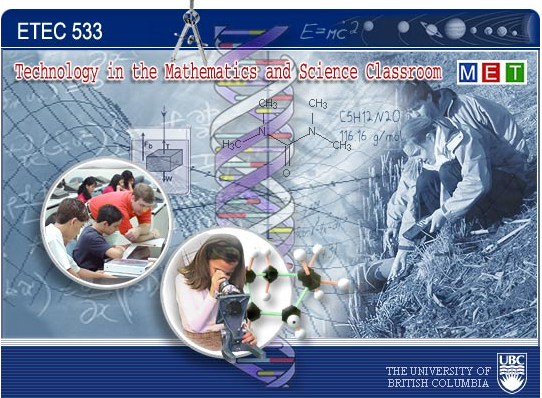The resource I picked is The National Library of Virtual Manipulatives. It looks a bit like Chemland, that we looked at in the last module. It provides applications for learners to manipulate and observe, from K to 12. The student can pick one tool and modify the variables to see the effects of it’s decision. Many of these manipulatives can be accessible in class, but not all classes own them. This website gives access to a plenitude of tools to simulate concepts. It is available in two languages.
Depending onf the teachers objectives, it could be used to stimulate conversations on the results of the experimentation or on the processes used. It can also be used as a laboratory to support concepts taught.
Why is visualization necessary (or not) for student understanding of math or science?
I believe students need concrete examples to better understand and make the connections in their brain. They need to manipulate for themselves. As Khan (2007) stated, reasoning with a mental model expands the notion of this traditional account to include abductive reasoning with visual representations, thought experiments, and analogies. This virtual library serves that purpose.
What are the multiple ways that students’ understanding could be represented with this dynamic visualization software and what are the implications for teaching practice?
Student’s understanding could be represented in multiple forms. It can be reflection, observations, journaling, discussions with peers or in groups… It does work through engagement and involvement of the student. They can expand their thoughts to push the limits of the application. The implications for the teaching practice are many but to name just a few of them : teachers can draw from that database to support their teaching ; they can use the simulation to apply a concept, where otherwise, they might not have the material to demonstrate it, etc.
What are some ways that a students’ understanding could be challenged with dynamic visualization software?
Here, the teacher can have the student extrapolate on an idea or a concept and see how it will respond to their understanding. After they could verify the comprehension with the virtual lab.
What are the social opportunities and potential cognitive opportunities that may emerge from interaction with this software?
The social aspect of it is mostly the discussions that will surround the project. As the students will understand the concept better, they will be able to articulate their ideas on the subject.
How would you use this technology in a classroom?
I use dit in math to support a concept I taught, to demonstrate something new. I made my students discover by themselves how a specific concept could be taught. They used the application to teach others about what they found. Some even invented new activities for younger ones to use.
Reference:
Khan, S. (2007). Model-based inquiries in chemistry. Science Education, 91(6), 877-905.
